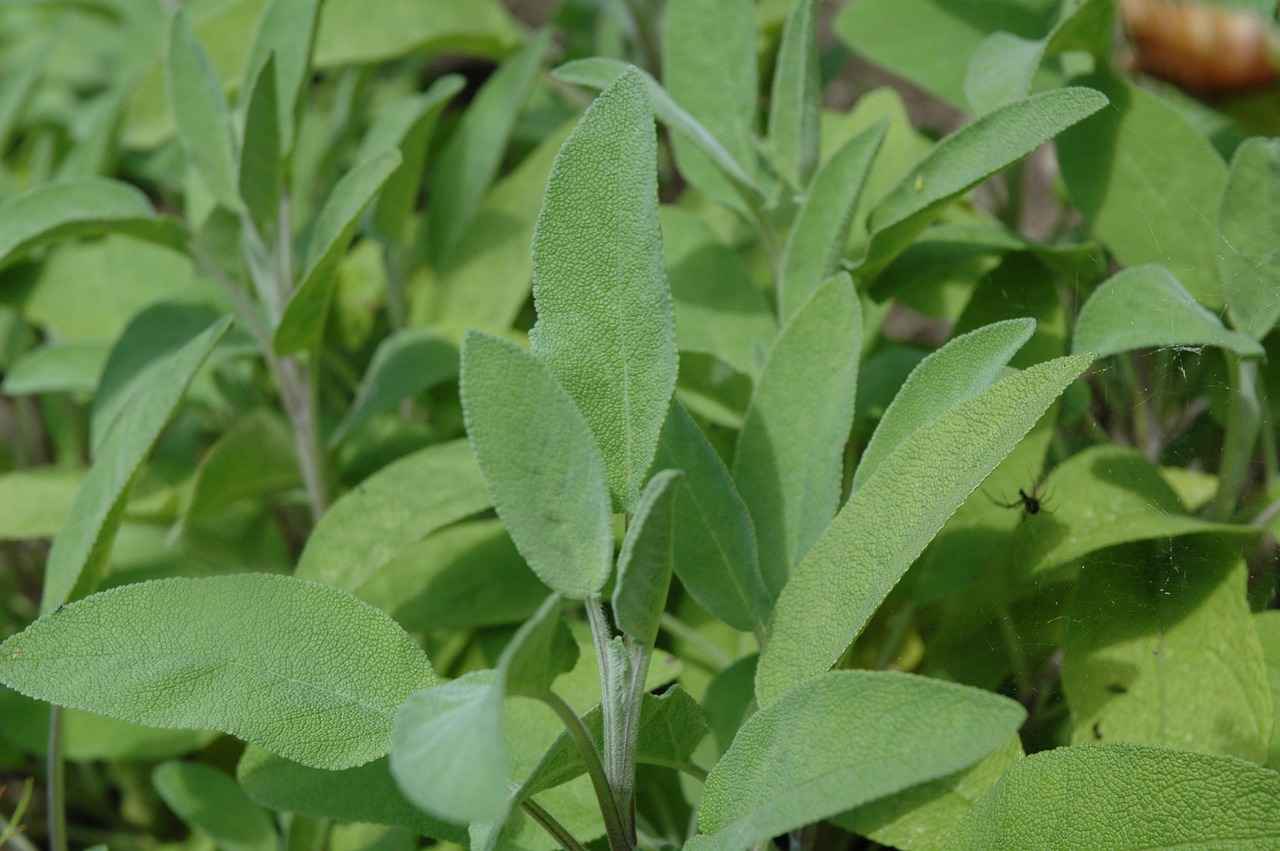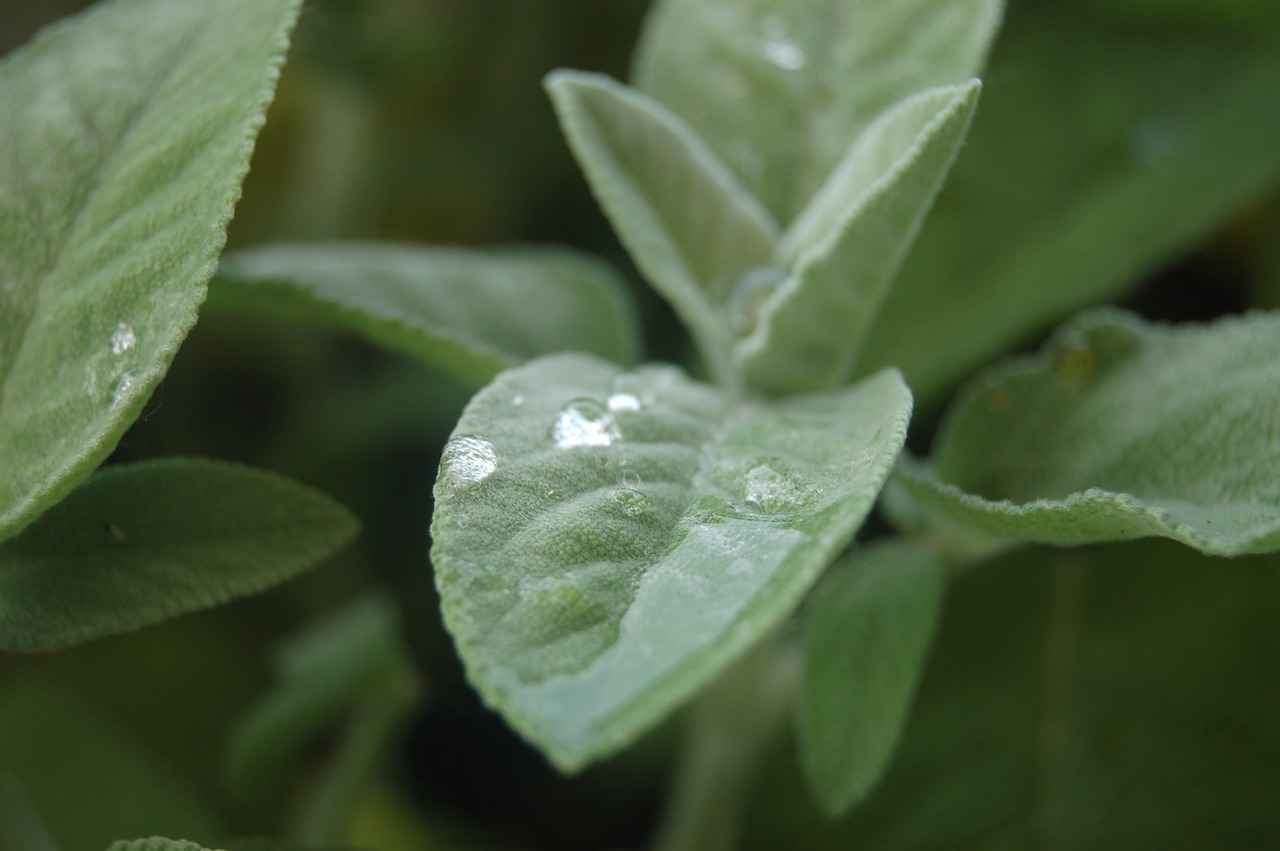Creating your own sage smudge stick is a rewarding endeavor that not only connects you to ancient traditions but also empowers you to cleanse and protect your space. This guide will walk you through the process, highlighting the traditional uses, benefits, and techniques for effective cleansing.
A sage smudge stick is a carefully bundled collection of dried sage leaves, often utilized in spiritual practices to cleanse spaces and promote positive energy. Understanding its significance enhances its effective use, making it a powerful tool in your spiritual toolkit.
Historically, sage has been revered in various cultures for its purifying properties. The practice of smudging with sage is believed to clear negative energies, making way for positive vibrations. This section explores the historical context of sage, emphasizing its role as a cleansing agent in rituals across different cultures.
To create an effective sage smudge stick, gathering the right materials is essential. You will need:
- White Sage – Known for its potent cleansing properties.
- Garden Sage – Offers a milder aroma and is easier to grow.
- Additional Herbs – Consider incorporating lavender or cedar to enhance the smudging experience.
Making a sage smudge stick is a straightforward process. Follow these steps to create your own:
Start by selecting fresh sage leaves. It’s important to dry them properly to ensure they burn well. Hang the sage upside down in a cool, dark place until completely dry.
Once your sage is dried, gather the leaves and bundle them tightly. Using natural twine or string, tie the bundle securely, ensuring it is compact enough to burn evenly.
To maximize the benefits of your sage smudge stick, knowing how to use it effectively is crucial. Here are some techniques:
Before you begin, take a moment to set clear intentions. This practice enhances the effectiveness of your smudging ritual, focusing your mind and spirit on your desired outcome.
When smudging, light the end of your sage stick and allow it to catch flame. Once it’s burning, blow out the flame to create smoke. Move around your space, directing the smoke into corners and areas where energy feels stagnant. Use a feather or your hand to waft the smoke.
Incorporating sage smudge sticks into your routine offers numerous benefits, including:
Sage smudging is believed to clear negative energy, fostering a sense of emotional balance and spiritual clarity. Regular use can help promote a tranquil atmosphere in your home.
Beyond spiritual aspects, sage smudging can improve air quality. The smoke from sage contains antimicrobial properties, contributing to a healthier living environment.
By understanding the art of making and using sage smudge sticks, you can create a more harmonious and positive space in your life.

What is a Sage Smudge Stick?
A sage smudge stick is a carefully crafted bundle of dried sage leaves, traditionally utilized in various spiritual practices to cleanse spaces and foster a sense of positive energy. The significance of this ancient practice is deeply rooted in history, and understanding its essence is crucial for effective use.
Historically, sage smudging has been a sacred ritual for many indigenous cultures, particularly among Native American tribes. They believed that the smoke from burning sage could drive away negative energies and spirits, thus creating a harmonious environment. The practice has transcended cultural boundaries, becoming popular in modern wellness and spiritual communities.
When discussing what a sage smudge stick is, it’s essential to note that not all sage is equal. The most commonly used type is white sage (Salvia apiana), known for its potent cleansing properties. Another popular option is garden sage (Salvia officinalis), which is more accessible and has a milder aroma. Both types of sage offer unique benefits, making them suitable for various cleansing rituals.
In addition to sage, smudge sticks often include other herbs such as lavender, cedar, and sweetgrass. Each of these herbs carries its own spiritual properties that can enhance the smudging experience. For instance, lavender is known for its calming effects, while cedar is often used for protection and grounding.
Creating your own sage smudge stick allows for personalization and intention-setting. By selecting the herbs that resonate with you, you can tailor the smudging experience to meet your specific needs. The process of making a smudge stick not only connects you to the herbs but also to the ritual itself, fostering a deeper understanding of its significance.
Furthermore, the act of smudging is not merely about the physical smoke; it is a spiritual practice that involves intention and mindfulness. Before lighting your sage, take a moment to set your intentions. This could be a simple affirmation or a desire to cleanse your space of negativity.
In summary, a sage smudge stick is more than just a bundle of herbs; it is a tool for spiritual cleansing and protection. By understanding its historical context, the types of sage available, and the additional herbs that can enhance its effects, you can effectively incorporate smudging into your spiritual practices. This ancient ritual continues to offer profound benefits, promoting a sense of peace, clarity, and positivity in our lives.

Why Use Sage for Cleansing?
Sage has been revered for centuries across various cultures, primarily for its remarkable cleansing properties. This ancient herb, often associated with spiritual rituals, is believed to carry the power of purification, making it a staple in many traditional practices.
Historically, sage has been utilized by Indigenous peoples in North America, where it is commonly used in smudging ceremonies. These ceremonies serve to cleanse spaces, promote healing, and invite positive energies. The practice of burning sage is not just a ritual; it is a profound act rooted in the belief that smoke can carry prayers and intentions to the spirit world.
In addition to its spiritual significance, sage has also been employed in various ancient medicinal practices. The Greeks, Romans, and Egyptians recognized its healing properties, using it to treat ailments ranging from digestive issues to respiratory problems. This duality of purpose—both for physical health and spiritual cleansing—highlights sage’s versatility.
But why is sage considered such a powerful tool for purification? One reason lies in its chemical composition. Sage contains compounds like thujone and camphor, which are known for their antimicrobial properties. When burned, these compounds can help eliminate bacteria and purify the air, making sage an effective tool for not only spiritual cleansing but also physical health.
Moreover, the act of smudging with sage is often accompanied by setting intentions. This mindfulness aspect enhances the cleansing process, allowing individuals to focus on releasing negative energies and inviting positive transformations. The ritualistic nature of sage smudging creates a space for reflection and renewal, making it a holistic practice that nurtures both the mind and spirit.
In many cultures, the rituals surrounding sage are steeped in tradition and respect. For instance, in Native American practices, sage is often offered to the Earth as a sign of gratitude before it is used. This connection to the earth and the act of honoring nature is vital to the overall cleansing process.
Furthermore, sage’s role in cleansing extends beyond personal use. Many people use sage to purify their homes, workplaces, and even objects that hold significant energy. The belief is that by cleansing these spaces, one can create a harmonious environment that fosters positivity and well-being.
As modern wellness practices continue to embrace ancient traditions, sage smudging has gained popularity in contemporary society. People are increasingly turning to this age-old practice to combat stress, anxiety, and negativity in their lives. The simple act of burning sage can serve as a powerful reminder to pause, reflect, and reset.
In conclusion, sage’s historical context and multifaceted uses underscore its significance as a powerful tool for purification. Whether used in spiritual rituals or for its physical health benefits, sage remains a timeless herb that continues to resonate with individuals seeking balance and clarity in their lives.

How to Gather the Right Ingredients?
Gathering the right materials is essential for making an effective sage smudge stick. This process not only involves selecting the appropriate type of sage but also considering additional herbs that can enhance your smudging experience. Understanding the properties and benefits of each ingredient is crucial for maximizing the effectiveness of your cleansing ritual.
Not all sage is created equal. The most commonly used types include:
- White Sage: Known for its strong cleansing properties, white sage is often favored in traditional smudging practices. Its aroma is potent and is believed to purify spaces and individuals from negative energies.
- Garden Sage: This variety has a milder scent and is often used in cooking. While it may not be as powerful as white sage for cleansing, it still possesses beneficial properties and can be an excellent choice for beginners.
- Desert Sage: With a unique fragrance, desert sage is another popular option. It is often used in Native American rituals and is believed to bring clarity and insight.
While sage is the primary ingredient, adding other herbs can significantly enhance your smudging experience. Here are some popular choices:
- Lavender: Known for its calming properties, lavender can help reduce stress and promote relaxation. Adding lavender to your smudge stick can create a soothing atmosphere.
- Cedar: Often used in Native American traditions, cedar is believed to provide protection and grounding. Its earthy scent complements sage well and can help deepen your cleansing rituals.
- Rosemary: This herb is associated with purification and protection. Its invigorating aroma can uplift the spirit and enhance mental clarity when included in your smudge stick.
Once you have gathered your sage and any additional herbs, it’s essential to prepare them properly:
- Drying: Ensure that your sage and herbs are thoroughly dried. Fresh herbs can produce excess moisture, which may hinder the burning process.
- Cutting: Trim the herbs to a manageable size. This makes them easier to bundle and helps with even burning.
- Mixing: Combine your chosen sage and herbs in a bowl. This allows you to visualize your blend and ensure a balanced mix.
By carefully selecting and preparing your ingredients, you set the foundation for a powerful smudging experience. Remember, the intention behind your smudging ritual is just as important as the materials you use. Take the time to connect with your herbs and set clear intentions for your cleansing process.
Choosing the Right Sage
is essential for effective cleansing rituals. Not all sage is created equal, and understanding the various types can significantly enhance your smudging experience. This section will explore different types of sage, focusing on white sage and garden sage, along with their unique properties and uses.
White sage (Salvia apiana) is a sacred herb traditionally used by Native American cultures for purification and healing. Its strong aroma is believed to cleanse spaces of negative energies and promote a sense of peace. White sage is often used in spiritual practices, making it a popular choice for smudging. When burned, it releases compounds that can help clear the air and enhance spiritual awareness.
- Purification: White sage is renowned for its ability to clear negative energy.
- Spiritual Connection: It is often used in rituals to enhance spiritual awareness.
- Aromatherapy: The scent of white sage can promote relaxation and reduce stress.
Garden sage (Salvia officinalis), commonly found in kitchens, has been used for culinary purposes as well as for its medicinal properties. While not as potent as white sage, garden sage also possesses cleansing properties. It is often used in smudging for those seeking a milder aroma and a more accessible option for everyday use.
- Accessibility: Garden sage is easy to grow and can be harvested fresh, making it a practical choice.
- Antimicrobial Properties: It may help purify the air and reduce bacteria.
- Calming Effects: The aroma can aid in relaxation and tranquility.
| Feature | White Sage | Garden Sage |
|---|---|---|
| Aroma Strength | Strong | Mild |
| Traditional Use | Spiritual and ceremonial | Culinary and medicinal |
| Availability | Less common; often wild-harvested | Widely available; easily grown |
When choosing the right sage for your smudging rituals, consider your intentions and the environment in which you will be using it. White sage is ideal for deep cleansing and spiritual rituals, while garden sage is perfect for everyday use and general purification. Both types of sage offer unique properties that can enhance your smudging practice.
Incorporating the right type of sage into your cleansing rituals can create a more profound and meaningful experience. Whether you opt for the traditional white sage or the versatile garden sage, understanding their differences will help you make an informed choice.
Additional Herbs for Enhanced Smudging
When it comes to enhancing your smudging rituals, incorporating additional herbs can significantly amplify the effects of your sage smudge stick. This practice not only diversifies the aromatic experience but also enriches the spiritual benefits associated with smudging. Below, we delve into some popular herbs, such as lavender and cedar, and explore their unique properties and advantages in smudging rituals.
Using additional herbs in your smudge stick can create a more potent blend, enhancing the overall cleansing process. Different herbs bring various properties to the table, such as promoting relaxation, attracting positive energy, or even providing protection. This combination can lead to a more balanced and effective ritual.
Lavender is widely recognized for its soothing aroma and calming effects. When included in a smudge stick, it can help to:
- Reduce Stress: The scent of lavender is known to alleviate anxiety and promote a sense of peace.
- Enhance Sleep: Burning lavender during smudging can create a tranquil environment conducive to restful sleep.
- Promote Healing: Lavender is often associated with healing properties, making it a great addition for those looking to cleanse their space of negative energy.
Cedar has a rich history in many cultures, often used for its protective qualities. Incorporating cedar into your smudge stick can provide benefits such as:
- Protection: Cedar is believed to ward off negative energies and spirits, creating a safe and sacred space.
- Grounding: The earthy aroma of cedar helps ground your energy, promoting stability and balance.
- Purification: Cedar smoke is thought to purify the air, making it a valuable addition for those looking to cleanse their environment.
In addition to lavender and cedar, several other herbs can enhance your smudging experience:
- Rosemary: Known for its cleansing properties, rosemary can help clear mental fog and enhance clarity.
- Sage: Beyond its primary use, sage can be mixed with other herbs to deepen the cleansing effects.
- Palo Santo: Often referred to as “holy wood,” palo santo is revered for its ability to cleanse spaces and promote positive energy.
When crafting your smudge stick, consider the specific intentions you have for your ritual. Combining herbs like lavender for relaxation and cedar for protection can create a harmonious blend tailored to your needs. It’s essential to:
- Choose Fresh Herbs: Always opt for high-quality, dried herbs to ensure optimal burning and efficacy.
- Bind Securely: Use natural twine to bind your smudge stick tightly, ensuring it burns evenly.
- Set Your Intentions: Before using your smudge stick, take a moment to focus on your intentions and what you wish to achieve during the ritual.
Incorporating these herbs not only enhances the aromatic experience but also enriches the spiritual benefits of your smudging rituals. By understanding the properties of each herb, you can create a personalized smudge stick that aligns with your cleansing and protective needs.

Step-by-Step Guide to Making a Sage Smudge Stick
Creating your very own sage smudge stick can be an enriching and fulfilling experience. Not only does it allow you to connect with nature, but it also empowers you to engage in a traditional practice that has been cherished for centuries. This step-by-step guide will take you through the entire process, ensuring that you craft a smudge stick that is both effective and meaningful.
Before diving into the crafting process, it’s essential to gather all the necessary materials:
- Dried Sage: White sage is the most popular choice, but garden sage works well too.
- Additional Herbs: Consider incorporating herbs like lavender or cedar for enhanced benefits.
- Natural Twine: Use cotton or jute twine to bind your smudge stick securely.
- Scissors: To cut the twine and trim the herbs as needed.
The preparation of your sage is crucial for a successful smudge stick. Here’s how to do it:
- Harvest the Sage: If you’re using fresh sage, cut the stems in the morning when the oils are most potent.
- Dry the Sage: Hang the sage upside down in a dark, dry place for about two weeks. Ensure it’s completely dry before proceeding.
- Sort and Trim: Once dried, sort the sage into manageable bundles and trim them to your desired length.
Binding is a critical step that determines how well your smudge stick will burn:
- Arrange the Herbs: Place the sage and any additional herbs in a bundle, ensuring they are tightly packed.
- Start Wrapping: Using your twine, start wrapping the bundle from the base upwards, making sure to cover all the herbs.
- Secure the Ends: Once you reach the top, tie a knot to secure the bundle, ensuring it remains intact during burning.
After binding your smudge stick, it’s important to let it dry again:
- Hang it Up: Use a string or clip to hang your smudge stick in a cool, dark place for another week. This ensures it is thoroughly dried for optimal burning.
- Check for Completeness: The stick should feel firm and not bend easily when dry.
Now that you have created your smudge stick, it’s time to use it effectively:
- Set Your Intentions: Before lighting your smudge stick, take a moment to set your intentions for the cleansing ritual.
- Light the Stick: Use a match or lighter to ignite the end of the smudge stick, allowing it to catch fire for a few seconds before blowing it out.
- Smudge Your Space: Walk around the area you wish to cleanse, waving the smoke into the corners and over any objects you want to purify.
Creating a sage smudge stick is not just about the physical act; it’s about the intention and energy you put into the process. By following these steps, you can craft a smudge stick that not only serves as a tool for cleansing but also as a personal symbol of your spiritual journey.
Preparing the Sage
is a vital step in creating an effective smudge stick. Proper preparation not only enhances the burning quality but also maximizes the cleansing properties of the sage. This section will guide you through the essential steps to ensure your sage is dried and bundled correctly for optimal use.
- Harvesting the Sage: Start by selecting healthy sage plants. The best time to harvest is in the morning after the dew has dried but before the sun is at its peak. Carefully cut the stems, leaving enough for the plant to continue growing.
- Drying the Sage: Once harvested, it’s crucial to dry the sage properly. Bundle the sage stems together and tie them with a natural twine. Hang the bundles upside down in a cool, dark, and dry place. This method allows the sage to retain its essential oils, which are key to its aromatic properties.
- Checking for Dryness: After a week or two, check if the sage is fully dried. The leaves should feel crisp and crumble easily when touched. If they are still moist, continue drying until they reach the desired consistency.
Once your sage is dried, it’s time to bundle it for smudging. Here are the steps to follow:
- Creating a Bundle: Take a few dried sage stems and arrange them together. You can mix in other herbs, such as lavender or cedar, to enhance the aromatic experience.
- Securing the Bundle: Use the same natural twine to wrap the bundle tightly. Start from the bottom and work your way up, making sure the leaves are secure but not overly compressed. This will ensure even burning during use.
- Trimming the Ends: Once the bundle is secured, trim the ends to create a uniform appearance. This not only makes the smudge stick look neat but also ensures that it burns evenly.
After preparing your sage smudge stick, it’s important to allow it to cure for a few days before using it. This resting period helps the flavors and aromas to develop fully, leading to a more potent smudging experience.
In summary, the preparation of sage is an art that requires attention to detail and care. By following these steps, you can create a high-quality smudge stick that is effective for cleansing and protection. Remember, the energy you put into preparing your sage will reflect in its use, enhancing your spiritual practice.
Binding Techniques for Durability
Binding your sage smudge stick correctly is crucial for ensuring it burns evenly and lasts longer. Proper binding not only enhances the smudging experience but also allows for a more controlled and effective cleansing ritual. In this section, we will explore various techniques for tying your smudge stick securely, ensuring that your sage remains intact throughout its use.
When creating a sage smudge stick, proper binding is essential for several reasons:
- Even Burning: A well-bound smudge stick burns more evenly, allowing for a consistent release of smoke.
- Longevity: Securely tied sage lasts longer, providing more smudging sessions from a single stick.
- Safety: Proper binding reduces the risk of the sage falling apart during use, which can be a fire hazard.
There are several methods you can use to bind your sage smudge stick effectively:
One of the most common methods is to use natural twine or string. Here’s how to do it:
- Start by gathering your sage and any additional herbs you wish to include.
- Lay the herbs in a bundle, ensuring they are tightly packed.
- Cut a length of twine, approximately 3 to 4 feet long.
- Begin wrapping the twine around the base of the bundle, making sure to keep the herbs tightly together.
- Continue wrapping upwards, spiraling the twine around the bundle until you reach the top.
- Once you reach the top, secure the twine by tying a knot and trimming any excess.
For a more eco-friendly option, consider using natural fibers like cotton or jute:
- Cut a length of the natural fiber, similar to the twine method.
- Wrap the fiber around the sage bundle, ensuring it is tight but not overly constrictive.
- Secure the ends with a knot, allowing for a bit of give to let the sage breathe.
To ensure that your binding technique is effective, keep these tips in mind:
- Consistency: Maintain consistent tension while wrapping to avoid loose areas that may burn unevenly.
- Placement: Start binding from the bottom and work your way up to create a stable base.
- Multiple Layers: For larger bundles, consider using multiple layers of binding to ensure durability.
By employing these binding techniques, you can create a sage smudge stick that is not only beautiful but also functional. Whether you choose twine, natural fibers, or a combination of both, the key is to ensure that your smudge stick is securely bound. This will enhance your smudging rituals, providing a more effective and enjoyable experience.

How to Use Your Sage Smudge Stick Effectively?
Using your sage smudge stick effectively is crucial for harnessing its full potential in cleansing and protection rituals. Smudging is a practice steeped in tradition, and understanding the various techniques can significantly enhance the experience. Below are detailed methods and rituals to help you incorporate smudging into your cleansing practice.
Smudging with sage is not merely a ritual; it is a profound way to create a harmonious environment. The smoke from sage is believed to purify spaces, dispelling negative energies and inviting positive vibrations. This process is essential for emotional and spiritual well-being.
Before you begin the smudging process, it is vital to set clear intentions. This involves focusing your mind on what you wish to achieve through the ritual. Whether it’s to cleanse your space, invite peace, or release negativity, articulating your intentions can significantly enhance the effectiveness of the smudging.
Different techniques can be used for smudging various spaces, and here are some effective methods:
- Room Cleansing: Start at the entrance of the room, lighting your sage stick until it smolders. Move clockwise around the room, allowing the smoke to reach corners and areas where energy may stagnate.
- Personal Cleansing: To cleanse yourself, hold the sage stick in one hand and use the other hand to direct the smoke around your body, focusing on areas where you feel tension or negativity.
- Object Cleansing: For personal items, such as crystals or jewelry, pass them through the smoke to remove any unwanted energies.
Rituals can add depth to your smudging practice. Consider incorporating the following:
- Sound: Use a bell or singing bowl during smudging to elevate the energy and enhance the cleansing process.
- Affirmations: Speak positive affirmations or prayers aloud while smudging to reinforce your intentions.
- Crystals: Place crystals around your space while smudging to amplify the cleansing effects.
After completing your smudging ritual, take a moment to reflect. Consider journaling your thoughts or feelings to track any changes in your emotional state. Additionally, ensure that the space remains clear of clutter and negativity to maintain the positive energy you’ve invited in.
Regular smudging can help maintain a positive atmosphere. Depending on your environment, you might choose to smudge:
- Weekly, for a busy or chaotic space.
- Monthly, for a peaceful environment.
- Whenever you feel negative energy or emotional heaviness.
In conclusion, effectively using your sage smudge stick involves a combination of intention, technique, and ritual. By understanding these elements, you can maximize the benefits of smudging, creating a space that is not only cleansed but also filled with positive energy.
Setting Intentions Before Smudging
When performing a smudging ritual, setting clear intentions is a crucial step that can significantly enhance its effectiveness. Intentions serve as the guiding force behind your ritual, allowing you to focus your mind and spirit on your desired outcome. This section will delve into how to properly set your intentions before beginning the smudging process, ensuring a more meaningful and impactful experience.
To start, find a quiet space where you can concentrate without distractions. This could be a peaceful corner of your home, a garden, or anywhere you feel connected to your surroundings. Once settled, take a moment to center yourself. You can do this by taking deep breaths, closing your eyes, and visualizing calming energy enveloping you. This practice will help clear your mind and prepare your spirit for the ritual.
Next, it’s essential to define your specific intention. What do you hope to achieve with this smudging? Are you looking to cleanse negative energy, invite positive vibrations, or perhaps seek clarity in a particular area of your life? Writing down your intention can be a powerful tool. Consider using a journal or a piece of paper to articulate your thoughts. This act not only solidifies your intention but also serves as a reference point during your ritual.
Once you have your intention in mind, hold it close as you prepare to light your sage smudge stick. You might say your intention aloud, or simply repeat it in your mind as you light the sage. This vocalization or mental repetition acts as a manifestation, reinforcing your desire and commitment to the cleansing process.
- Visualize the Process: As the smoke rises, visualize your intention manifesting. Imagine the negative energy dissipating and being replaced by positive energy.
- Focus on Gratitude: Express gratitude for the cleansing process and the positive energies that will follow. This positive mindset can amplify the effects of your ritual.
- Stay Present: Maintain a state of mindfulness throughout the smudging process. Being present allows you to connect deeply with your intention and the energy around you.
In conclusion, setting intentions before smudging is not merely a ritualistic formality; it is a vital step that enhances the overall effectiveness of your cleansing practice. By taking the time to center yourself, define your intentions, and engage fully in the process, you create a powerful space for transformation and healing. Remember, the clearer your intentions, the more profound the impact of your smudging ritual will be.
Techniques for Smudging Spaces
When it comes to cleansing your environment, utilizing sage smudging techniques can be a transformative practice. Whether you are looking to purify your home, enhance your workspace, or even cleanse personal items, understanding various smudging techniques will enable you to achieve effective results.
To start, it’s important to prepare your space. Begin by opening windows and doors to allow negative energy to escape. This creates a flow of fresh air, enhancing the cleansing process. Once your space is ready, follow these steps:
- Light the Smudge Stick: Ignite one end of the sage smudge stick and let it burn for a few seconds before blowing out the flame. Allow the smoke to billow.
- Walk Through Each Room: As you move through your home, gently wave the smudge stick, directing the smoke into corners and around windows and doors.
- Set Intentions: While smudging, focus on your intentions for cleansing. This could be to remove negativity or to invite peace and tranquility.
Your workspace can often accumulate stress and tension. To promote a more positive atmosphere, consider these techniques:
- Smudge Before Important Meetings: Take a moment to smudge your workspace before significant events to clear any lingering negativity.
- Incorporate Affirmations: As you smudge, recite positive affirmations to reinforce your intentions and create a motivating environment.
- Focus on Shared Spaces: Don’t forget communal areas. Smudging break rooms and meeting spaces can enhance collective energy.
Personal items, such as crystals or jewelry, can hold onto energies from past experiences. To cleanse these items:
- Hold the Item in the Smoke: Gently pass the item through the smoke of the smudge stick, envisioning the smoke purifying its energy.
- Use a Bowl: For multiple items, place them in a bowl and smudge over them, ensuring the smoke envelops each piece.
- Set Personal Intentions: As you cleanse, articulate what you wish to release from the item and what positive energy you wish to invite in.
To maximize the benefits of your smudging practice, consider these additional tips:
- Choose the Right Time: Early mornings or during a full moon are considered optimal times for cleansing.
- Practice Regularly: Incorporating smudging into your routine can help maintain a positive and balanced environment.
- Be Mindful: Approach your smudging practice with mindfulness and respect, acknowledging the traditions behind it.
By employing these techniques, you can effectively cleanse your home, workspace, and personal belongings, enhancing the energy within your environment. Remember, the key is to set clear intentions and approach the practice with an open heart and mind.

What are the Benefits of Using Sage Smudge Sticks?
Using sage smudge sticks has gained popularity in recent years, not only for their aromatic properties but also for their numerous benefits. This ancient practice, rooted in various cultural traditions, offers a range of advantages that extend beyond mere fragrance. In this section, we will explore the spiritual, emotional, and even physical benefits of incorporating sage smudging into your daily routine.
One of the most well-known benefits of using sage smudge sticks is their ability to cleanse negative energy from spaces and individuals. This practice is often referred to as spiritual cleansing, and it involves the burning of sage to purify an environment. Many believe that sage has the power to dispel negative entities and create a more harmonious atmosphere. By incorporating sage smudging into your rituals, you can create a sacred space that fosters positive energy.
In addition to its spiritual benefits, sage smudging is also linked to improved emotional health. The act of smudging can serve as a form of meditation, allowing individuals to focus their thoughts and intentions. This mindfulness practice can lead to reduced anxiety and stress, promoting a sense of calm and clarity. Many users report feeling more grounded and centered after a smudging session, making it an excellent tool for emotional balance.
Beyond its spiritual and emotional advantages, sage smudging can also contribute to physical well-being. Burning sage releases compounds that can help purify the air, reducing the presence of bacteria and allergens. This can be particularly beneficial for those with respiratory issues or allergies. Furthermore, the aromatic properties of sage can create a soothing environment, promoting relaxation and overall wellness.
Integrating sage smudging into your routine can be simple and rewarding. Here are a few practical tips:
- Set Your Intentions: Before you begin, take a moment to reflect on what you want to achieve through the smudging process. Setting clear intentions can enhance the effectiveness of the ritual.
- Choose the Right Space: Find a quiet, tranquil area where you can perform your smudging without interruptions. This helps create a sacred atmosphere.
- Use the Right Technique: Light the sage bundle and allow it to smolder, then gently wave it around your space or body, ensuring that the smoke reaches all areas.
It’s important to acknowledge that sage smudging has deep cultural significance, particularly among Indigenous peoples. When incorporating this practice into your life, approach it with respect and understanding. Consider learning about the traditions and meanings behind it, and if possible, seek guidance from those who have a cultural connection to the practice.
In summary, the benefits of using sage smudge sticks are multifaceted, encompassing spiritual, emotional, and physical dimensions. By understanding and respecting this ancient practice, you can enhance your well-being and create a more harmonious environment in your life.
Spiritual and Emotional Benefits
Sage smudging has been a revered practice for centuries, deeply rooted in various cultures around the world. This ancient ritual is not just a physical act of burning sage; it encompasses a profound spiritual significance that resonates with those seeking to enhance their emotional well-being. By engaging in regular smudging, individuals can experience a myriad of benefits that contribute to both their spiritual and emotional health.
One of the primary beliefs surrounding sage smudging is its ability to clear negative energy. This cleansing process can help individuals release pent-up emotions, such as anger, anxiety, and sadness, allowing for a more balanced emotional state. The act of smudging creates a sacred space, promoting feelings of peace and tranquility. As the smoke from the sage envelops a room, it is thought to lift away any lingering negativity, making way for positive energy to flow freely.
Furthermore, sage smudging is believed to enhance emotional balance. Regular practice can help individuals cultivate a sense of mindfulness and presence, allowing them to process their emotions more effectively. By setting intentions before smudging, practitioners can focus on specific emotional challenges they wish to address. This intentional approach transforms the ritual into a powerful tool for personal growth and self-discovery.
In addition to emotional benefits, sage smudging can also foster a deeper connection to one’s spiritual self. Many people report experiencing heightened awareness and clarity during and after the smudging process. This can lead to a greater understanding of one’s purpose and a stronger connection to the universe. By creating a ritual around smudging, individuals can establish a routine that encourages reflection and spiritual exploration.
Moreover, the sensory experience of sage smudging—its earthy aroma and the visual of the smoke—can be incredibly grounding. Engaging the senses in this way helps to anchor individuals in the present moment, making it easier to let go of distractions and worries. This grounding effect is particularly beneficial for those dealing with stress or overwhelm, as it provides a moment of pause and clarity in their busy lives.
For those who practice meditation or yoga, incorporating sage smudging into these routines can amplify the benefits. The cleansing properties of sage enhance the overall experience, allowing for deeper meditation and a more profound connection to the self. This synergy between smudging and other spiritual practices can lead to transformative experiences, promoting overall well-being.
In summary, the spiritual and emotional benefits of sage smudging are manifold. From clearing negative energy to promoting emotional balance and enhancing spiritual connections, this ancient practice serves as a powerful tool for those seeking inner peace and clarity. By integrating sage smudging into your routine, you can cultivate a harmonious environment that supports your emotional and spiritual growth.
Physical Benefits of Cleansing with Sage
Sage smudging is not only a spiritual practice but also offers a variety of physical benefits that contribute to a healthier living environment. This ancient ritual, rooted in various cultural traditions, has gained popularity for its potential to improve overall well-being. In this section, we will explore the ways in which sage smudging can enhance air quality and promote physical health.
- Air Purification: One of the most significant benefits of sage smudging is its ability to purify the air. When sage is burned, it releases negative ions that can help neutralize pollutants and toxins in the environment. This process not only makes the air cleaner but also creates a more refreshing atmosphere.
- Reduction of Allergens: Burning sage can help reduce the presence of allergens such as dust, mold, and pollen. By cleansing the air, sage smudging can provide relief for individuals suffering from allergies or respiratory issues, making it easier to breathe and improving overall comfort.
- Elimination of Bacteria and Viruses: Research has shown that sage has antimicrobial properties, which can help eliminate harmful bacteria and viruses in the air. This makes sage smudging a valuable practice, especially during cold and flu seasons, as it can contribute to a healthier home environment.
- Reduction of Stress and Anxiety: The act of smudging itself can have calming effects on the mind and body. The ritual encourages mindfulness and relaxation, which can lead to lower levels of stress and anxiety. This emotional balance can have a positive impact on physical health, as stress is often linked to various health issues.
- Enhanced Mood and Energy Levels: Many people report feeling more energized and uplifted after smudging with sage. This boost in mood can lead to increased productivity and a more positive outlook on life, further contributing to overall well-being.
Incorporating sage smudging into your routine can be a simple yet effective way to improve your living environment. Whether you’re looking to purify the air, reduce allergens, or enhance your emotional well-being, sage offers a multifaceted approach to achieving a healthier lifestyle. Embracing this practice can lead to a more harmonious space, fostering both physical and spiritual health.
As you explore the benefits of sage smudging, consider integrating it into your regular cleansing rituals. By doing so, you can create a sanctuary that promotes both physical health and emotional balance, making your living space a true reflection of peace and positivity.
Frequently Asked Questions
- What is the significance of using sage in smudging?
Sage has been used for centuries across various cultures for its powerful cleansing properties. It’s believed to clear negative energy and create a positive atmosphere, making it a vital tool in spiritual practices.
- Can I use any type of sage for smudging?
Not all sage is created equal! While white sage is popular for its strong cleansing abilities, garden sage can also be used. Each type has unique properties, so choose according to your intention and preference.
- How do I properly prepare my sage smudge stick?
Preparation is key! Start by drying your sage thoroughly. Once dried, bundle the sage securely, ensuring it’s tightly bound to promote even burning. This step is crucial for an effective smudging experience.
- What additional herbs can enhance my smudging experience?
Incorporating herbs like lavender or cedar can amplify your smudging ritual. Lavender promotes calmness, while cedar is known for its protective qualities. Mixing these with sage can create a more powerful blend.
- How do I set intentions before smudging?
Before you start, take a moment to quiet your mind. Focus on what you want to achieve through smudging, whether it’s cleansing your space or inviting positivity. This clarity can enhance the effectiveness of your ritual.
- Are there any physical benefits to smudging with sage?
Absolutely! Beyond spiritual cleansing, sage smudging can improve air quality and promote a healthier environment. It’s a holistic practice that benefits both your spirit and your physical space.




